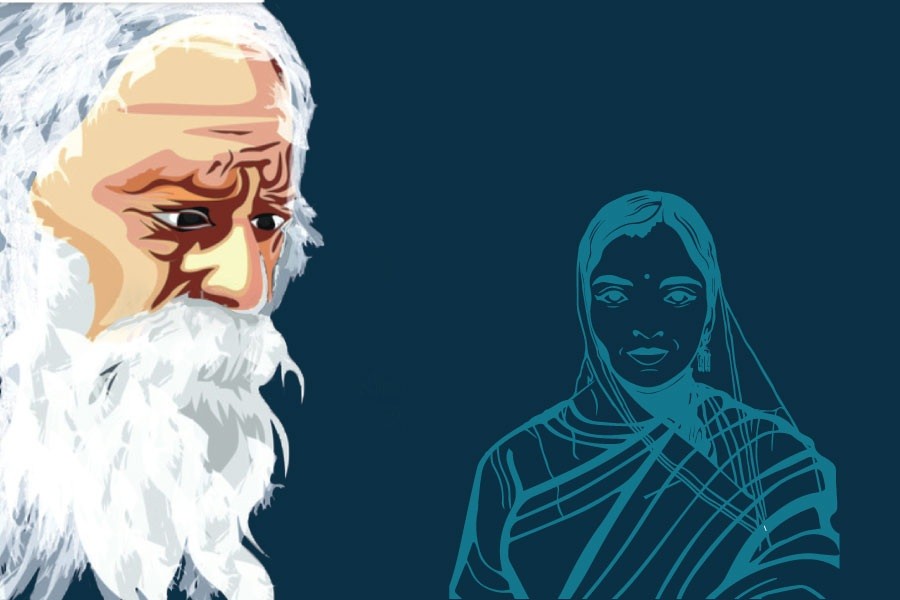Most of the female characters created by Rabindranath Tagore (1861-1941) reflecting the then society are young, especially teenaged. Some of them are so naive and expressive, as if they do not care about the world.
According to Tagore, women have a dual sense of personality – a mother and a beloved – with both conflict and contemplation.
Mrinmoyee from ‘Samapti’ cannot be overlooked because a character like her always leaves a great impact on a reader’s mind. But not everyone is or could be like her: girls are supposed to be someway repressed, shy and introverted and it was mandatory during the time of Tagore.
Among all stereotypical girls, Mrinmoyee is someone to be remembered for her rigidity. But it is a matter of regret that in the end she surrenders for the sake of love. The all-time sacrificing image of women is also highly found in Tagore's writings, be it Haimanti, Nirupoma, or Mrinal. They are oppressed by their in-laws differently and somehow they all give up. Kumudini, a female character in Tagore's novel ‘Jogajog’, also does not give up and protest, but it does not's last as the fiction also ends in a so-called happy way, with her going back to her husband.
There is an immense uniqueness in the portrayal of these characters and it is difficult to stereotype and label them. Tagore always makes readers take a journey with female characters inside their mind and the dreams they can never share with anybody.
No one can feel the pain behind these characters' sacrificing smile, calculate their shattered dreams, or know the exact amount of their day-to-day struggle. But from readers' point of view, we can.
Tagore enables us to connect with his understated characters of women, who were not able to come out of the cocoon during the time of the poet. But there are some exceptions.
Characters like Labanya from ‘Shesher Kabita’, Binodini from ‘Chokher Baali’ or Nandini from ‘Raktokorobi’ do not live in a cocoon. Their personality grows apart from the time, the surroundings. That’s how we can contrast other characters with them. They each have a stance and from life, they take a lesson.
We can also observe that they have to pay their price. Binodini, named after a great dancer from the 19th century, has to pay dearly for following her passion.
As for Labanya, she is a sophisticated woman who has a wise mind, and yet she cannot stick to her true love. She cannot manage to stay even with the love that sets her free. Rather, she chooses someone devoted to her from a very early age.
Nandini has always been different from everybody – she lives in her world, waiting for a splash of positive change while living in a dark place. Nandini is portrayed as a symbol of hope and happiness in the cursed time. But like in every fiction of Tagore's, she also ends up with a great loss. Maybe that’s the price she has to pay for dreaming.
The psychological conflict in these independent female characters shows us that at the end of the day, a free woman is sure to fail. It’s not like the dependent ones don’t, they also fail most of the time; but they get sympathy from society and maybe sympathy is the only reward for them.
It is quite interesting that Tagore, as a fiction writer, always chose tragic endings for almost all of his female characters, and no matter how passionate they seem at an early stage, they always end up suffering or surrendering.
The writer is a student of mass communication and journalism at Dhaka University. She can be reached at [email protected].


